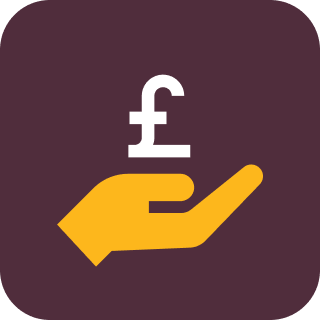Employer Health Tax (EHT) remittance is the process by which employers in certain jurisdictions, such as Ontario, Canada, submit payments for the Employer Health Tax. This tax is calculated based on an employer's total annual payroll and helps fund healthcare services.
What is Employer Health Tax (EHT)?
Employer Health Tax (EHT) is a payroll tax that Canadian employers must pay on the remuneration they provide to their employees. The tax rate varies by province and is applied to the total annual payroll of a company. The revenue from EHT is used to help fund provincial healthcare services.
Who pays Employer Health Tax (EHT)?
Employers in specific provinces are responsible for paying the Employer Health Tax. Businesses with payrolls exceeding certain exemption thresholds are required to pay EHT, while smaller employers may be exempt.
What is Employer Health Tax (EHT) for?
Employer Health Tax is primarily used to fund the public healthcare systems in provinces that enforce the tax. It also helps support the provincial government in providing essential public services like post-secondary education.
Who is exempt from EHT?
Employers with annual payrolls below a certain exemption amount may not have to pay Employer Health Tax, depending on the law in their province. For example, in Ontario, businesses with a payroll below $1 million are generally exempt from EHT. Other exemptions may apply depending on the size and type of business, such as nonprofit organizations and certain charitable institutions. And in some provinces, EHT isn’t enforced at all (more on this below).
Which provinces enforce Employer Health Tax (EHT)?
Several Canadian provinces enforce Employer Health Tax (EHT) as a means for employers to contribute to the public healthcare system. Each province has its own set of regulations regarding the tax rate, payroll thresholds, and exemptions.
EHT legislation by province
Province/territory
Tax rate
Legislation
Northwest Territories and Nunavut
2% from each employee’s total compensation (paid by employees)
The tax is applicable to all employees who engage in work, fulfill responsibilities, or deliver services in Northwest Territories or Nunavut, regardless of where the employee or the employer reside. Exemptions apply to employees who typically work outside the territory.
British Columbia
5.85% on total remuneration over $1 million, paid by employers for their current and former employees within a calendar year
Beginning with the employer health tax return for 2024, employers with BC remuneration of under $1 million are exempt, and the 5.85% rate applies to those who exceed the exemption threshold.
For 2023 and prior years, employers paid 2.925% on remuneration between $500,000 and $1.5 million, and 1.95% on remuneration over $1.5 million.
In BC, the employer health tax is separate from Medical Services Plan premiums, which are remitted separately.
Manitoba
4.3% on total payroll between $2.25 million and $4.5 million
2.15% on total payroll over $4.5 million
Manitoba’s Health and Post Secondary Education Tax Levy applies to employers with a permanent establishment in the province. Employers with total payroll under $2.25 million are exempt. Associated groups of employers (for example, franchises) must share the $2.25 million exemption based on the total of their combined yearly payroll.
Ontario
Rates vary based on the employer’s total Ontario payroll before deducting any allowable exemption. Current Ontario EHT rates can be found on the Government Ontario website.
Employers pay Ontario’s Employer Health Tax to provide the government with revenue to fund healthcare in the province. Employers must pay if their Ontario payroll is more than their allowable exemption amount. The current exemption is $1 million.
Employers can claim tax exemption if they:
- Are an eligible employer as defined under the EHT Act
- Pay income tax
- Their payroll for the year (including payroll of all associated employers using an exemption allocation) is less than $5 million, or they are a registered charity
- They are not controlled by any level of government
Quebec
Rates vary based on the employer’s total payroll for the year and sector of activity. Remittances are calculated using the prior year’s estimated contribution rate—actual rates aren’t determined until you file an RL-1 summary at the end of the year.
Quebec employers pay contributions to the province’s health services fund via the tax. Rates are determined and set annually.
Newfoundland and Labrador
2% on total payroll for all employers whose annual remuneration in the province exceeds the exemption threshold
Employers whose annual remuneration in the province exceeds the exemption threshold must pay the tax. Currently, the exemption threshold is $2 million for all employers.
How to pay EHT
EHT is calculated and paid slightly differently in each province—they all have their own tax rates, thresholds, and exemption amounts. Employers must track their payroll throughout the year and determine if they meet the threshold for paying EHT. Payments can often be made in installments, with the final amount due at the end of the tax year.
How to pay EHT in Northwest Territories and Nunavut
In the Northwest Territories and Nunavut, EHT is included in a 2% flat payroll tax paid by employees. However, it’s up to employers to withhold and remit the tax on their employees’ behalf.
First, register to pay the Payroll Tax. In Northwest Territories, complete the Payroll Tax Registration Form. In Nunavut, complete the Payroll Tax – Application for Registration.
Then, employers are required to withhold 2% of each employee’s taxable remuneration at the time each employee is paid. Taxable income includes:
- Salaries and wages, bonuses, gratuities, and commissions
- Vacation travel assistance
- Stock options
- Value of allowances and benefits taxable under the federal Income Tax Act
- Contributions by employers to registered retirement savings plans (RRSP)
- Retiring allowances or severance pay
Due dates depend on the employer’s payroll amount:
- Pay and report monthly (on the last day of the month) if your payroll is greater than $1 million
- Pay and report quarterly (March 31, June 30, Sept. 30, and Dec. 31) if your payroll is between $600,000 and $1 million
- Pay and report semi-annually (June 30 and Dec. 31) if your payroll is between $200,000 and $600,000
- Pay and report annually (Dec. 31) if your payroll is equal to or less than $200,000
Employers must also submit an annual return to report their employees and the total amount of tax paid.
How to pay EHT in British Columbia
First, register for an employer health tax account using eTaxBC. The registration process takes around 10 minutes, and requires:
- Your federal business number (BN)
- A mailing address and business location address (if different)
- The date your permanent establishment started in BC (if later than December 31, 2017)
- Your incorporation number and date, if your business is incorporated
If your business is a non-profit or registered charity, you’ll need your Registered Charity Number. If it’s incorporated outside of BC, you’ll need a copy of your incorporation documents. If it’s a partnership, you’ll need a copy of your partnership agreement.
Once you’ve registered, you can start filing and making payments. You can pay online using eTaxBC or through your bank or financial institution. Note that if your employer health tax liability in the previous calendar year exceeded $2,925, you must make quarterly installment payments of either 25% of the prior year’s tax or 25% of the current year’s tax. If you aren’t required to make payments, the entire balance is due on or before the March 31 filing due date.
How to pay EHT in Manitoba
First, employers need to register for Manitoba’s Health and Post Secondary Education Tax Levy, also known as the HE Levy. Employers can register online or by sending a registration form to the Manitoba Finance office.
Employers with payroll exceeding $2.25 million are required to pay the HE Levy, and must make monthly returns online—Manitoba no longer accepts paper returns for monthly filers. An annual report is also required, due by March 31 each year.
How to pay EHT in Ontario
Ontario’s Employer Health Tax is paid by employers on all taxable remuneration to current and former employees. If your total Ontario remuneration is more than the allowable exemption amount (currently $1 million), you need to register and pay EHT. The exemption acts as a tax credit that keeps most small businesses from having to pay EHT in Ontario.
The first step is to register for an EHT account with the Ontario Ministry of Finance. Businesses can register online, by phone (by calling 1-866-ONT-TAXS), or by visiting a ServiceOntario centre. You will need:
- Your business’ legal name, trade name, address, mailing address, phone and fax numbers
- The name of a business contact or authorized representative
- Your payroll start date and frequency
- Your federal business number (BN)
Once you’re registered, you’ll start receiving EHT returns. Returns and payments are due by March 31. For businesses with over $1.2 million in total payroll, the Employer Health Tax Act requires monthly installments.
How to pay EHT in Quebec
Quebec requires employers to contribute to its health services fund, but the process is more obscure than in other provinces. Rates are based on your total payroll for the year and your sector of activity, but when you make monthly contributions, they’re based on an estimated contribution rate—actual rates aren’t determined until you file an RL-1 summary at the end of the year.
You can use WebRAS – Calculation of Source Deductions and Employer Contributions or the Formulas to Calculate Source Deductions and Contributions (TP-1015.F-V) to calculate your estimated contributions. Taxes should be remitted to Revenu Québec along with your monthly TPZ-1015.
How to pay EHT in Newfoundland and Labrador
Employers in Newfoundland and Labrador are subject to a flat Health and Post Secondary Education Tax of 2% if their annual remuneration in the province exceeds the exemption threshold, which was raised to $2 million for all employers in 2023.
Taxes are due monthly and can be e-filed online.
Rippling and its affiliates do not provide tax, legal, or accounting advice. This material has been prepared for informational purposes only, and is not intended to provide, and should not be relied on for, tax, legal, or accounting advice. You should consult your own tax, legal, and accounting advisors before engaging in any related activities or transactions.












































































































